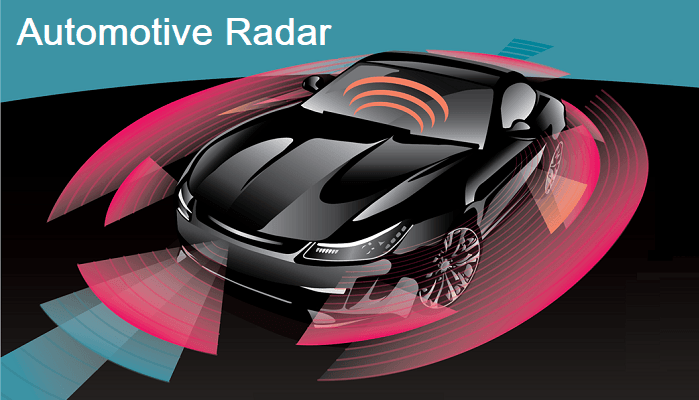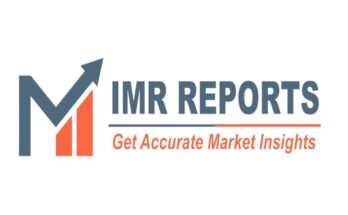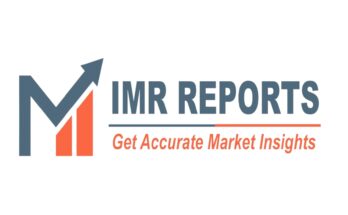According to TechSci Research report, “Automotive Radar Sensors Market – Global Industry Size, Share, Trends, Competition Forecast & Opportunities, 2029”, the Global Automotive Radar Sensors Market stood at USD 9.80 Billion in 2023 and is anticipated to grow with a CAGR of 23.07% in the forecast period, 2025-2029. The global automotive radar sensors market has undergone substantial growth and transformation in recent years, driven by advancements in technology, increasing safety awareness, and the integration of advanced driver assistance systems (ADAS) in vehicles. Radar sensors have become pivotal components, contributing significantly to vehicle safety, autonomy, and overall driving experience.
The market has experienced robust growth, propelled by the escalating demand for automobiles globally and a heightened focus on safety features. Radar sensors are integral to meeting safety standards, enhancing collision avoidance capabilities, and improving driving safety, aligning with consumer expectations for advanced safety technologies. As a result, the market size has expanded, and this upward trajectory is expected to continue as more vehicles incorporate radar sensor-based safety systems.
Automotive radar sensors find applications across various domains. Adaptive Cruise Control (ACC) utilizes radar sensors to maintain a safe following distance, collision avoidance systems rely on them to detect potential collisions, and Blind-Spot Detection systems use radar to monitor adjacent lanes. Additionally, radar sensors play a critical role in Automatic Emergency Braking (AEB) systems, swiftly responding to imminent collision situations. This versatility positions radar sensors as key components in the broader ADAS ecosystem.
Continuous technological advancements characterize the automotive radar sensors market. Manufacturers focus on developing sensors with improved capabilities, including higher resolution, longer detection ranges, and enhanced object differentiation. Integration with other sensor technologies, such as LiDAR and cameras, is becoming more prevalent, enabling comprehensive and redundant perception systems. This fusion of sensor technologies contributes to more robust ADAS functionalities and supports the evolution toward higher levels of autonomous driving.
An emerging trend is the integration of radar sensors with Vehicle-to-Everything (V2X) communication systems. This integration enhances overall traffic management and safety by enabling vehicles to exchange information with each other and with infrastructure. Radar sensors contribute valuable data for real-time communication, facilitating informed decision-making in scenarios like intersection management, traffic flow optimization, and collision avoidance.
The rise of electric vehicles (EVs) and the development of autonomous driving technologies significantly impact the automotive radar sensors market. In EVs, radar sensors contribute to features like adaptive regenerative braking and obstacle detection. The transition to electric powertrains has led to increased demand for radar sensors tailored to the specific needs of EVs. In the context of autonomous vehicles, radar sensors play a crucial role in creating a comprehensive perception system, ensuring the safety and efficacy of autonomous driving systems.
Regional dynamics play a key role in shaping the automotive radar sensors market. North America, Europe & CIS, and Asia-Pacific are prominent regions driving market growth. North America, with stringent safety regulations and high safety awareness, has been a leader in radar sensor adoption. Europe & CIS, known for its robust automotive industry, has witnessed widespread integration of radar sensors. Asia-Pacific, with significant automotive production in countries like China and Japan, has embraced ADAS technologies to address rising safety concerns.
Browse over market data Figures spread through 180 Pages and an in-depth TOC on “ Global Automotive Radar Sensors Market.” @ https://www.techsciresearch.com/report/automotive-radar-sensors-market/21454.html
The North American region is a significant driver of the global automotive radar sensors market. The United States, in particular, has been at the forefront of adopting advanced safety technologies in vehicles, contributing to the widespread integration of radar sensors. Stringent safety regulations and a high level of safety awareness among consumers have accelerated the adoption of radar-based systems such as Adaptive Cruise Control (ACC) and Automatic Emergency Braking (AEB). The region’s robust automotive industry, coupled with a strong focus on research and development, ensures continuous innovation in radar sensor technologies. North America is also witnessing a surge in electric vehicle adoption, further influencing the demand for radar sensors in this dynamic automotive landscape.
Europe and the Commonwealth of Independent States (CIS) form another crucial region shaping the automotive radar sensors market. Europe, with its strong automotive manufacturing presence, has embraced radar sensors to meet stringent safety standards. The European market has witnessed extensive integration of radar sensors across various vehicle segments, contributing to enhanced safety features and advanced driver assistance systems. The emphasis on vehicle safety and the region’s commitment to reducing road accidents have fueled the adoption of radar-based collision avoidance and mitigation systems. Additionally, the CIS countries, with their growing automotive markets, are gradually incorporating radar sensors, aligning with the global trend toward safer and more technologically advanced vehicles.
The Asia-Pacific region stands out as a dynamic and rapidly growing market for automotive radar sensors. China, Japan, and South Korea, among others, are major contributors to the region’s prominence. Asia-Pacific experiences a surge in demand for vehicles, driven by the growing middle-class population and urbanization. This demand, coupled with increasing safety concerns, has led to the widespread adoption of radar sensors. The region is witnessing significant advancements in ADAS technologies, with radar sensors playing a crucial role in applications like adaptive cruise control and collision warning systems. The rise of electric vehicles in countries like China further propels the need for radar sensors tailored to the specific requirements of electric powertrains.
South America presents a unique landscape in the automotive radar sensors market, characterized by diverse economic conditions and varying levels of technological adoption. Countries like Brazil and Argentina are witnessing a growing interest in advanced safety technologies, including radar-based systems. The region’s automotive market dynamics are influenced by economic growth, government policies, and consumer preferences for vehicles equipped with advanced features. While the adoption of radar sensors may not be as widespread as in more developed regions, the increasing focus on vehicle safety is likely to drive further integration of radar technologies in the coming years.
The Middle East and Africa exhibit unique market dynamics for automotive radar sensors. In the Middle East, there is a growing interest in high-performance vehicles, leading to the adoption of radar sensors for applications like adaptive cruise control and collision avoidance. Luxury vehicles equipped with advanced safety features are gaining popularity in the region. In Africa, the market is characterized by a focus on robust and durable solutions, with radar sensors finding applications in heavy-duty and off-road vehicles. The adoption of radar sensors in the Middle East & Africa is influenced by factors such as economic development, infrastructure projects, and the demand for vehicles capable of handling challenging driving conditions.
Major companies operating in the Global Automotive Radar Sensors Market are:
- Robert Bosch GmbH
- Hella KGaA Hueck & Co.
- Continental AG
- Aptiv PLC
- Autoliv Inc.
- Valeo S.A
- Infineon Technologies AG
- NXP Semiconductors N.V
- Texas Instruments Incorporated
- DENSO TEN Limited
To Download FREE Sample Pages of this Report📥 @ https://www.techsciresearch.com/sample-report.aspx?cid=21454
Customers can also request 10% free customization in this report.
“In the rapidly evolving landscape of automotive radar sensors, it’s crucial for businesses to prioritize innovation and adaptability. Staying ahead in this competitive market requires a keen focus on technological advancements, strategic collaborations, and anticipating the evolving needs of the automotive industry. A proactive approach to regulatory compliance and a commitment to delivering cutting-edge radar sensor solutions will be key factors for sustained success in this dynamic business environment,” said Mr. Karan Chechi, Research Director with TechSci Research, a research-based management consulting firm.
“Automotive Radar Sensors Market – Global Industry Size, Share, Trends Opportunity, and Forecast, Segmented By Range (Short-Range, Medium-Range, Long-Range), By Application (Lane Change Assist, Adaptive Cruise Control, Autonomous Emergency Braking, Blind Spot Detection, Forward Collision Warning System), By Vehicle Type (Passenger Cars, Commercial Vehicles), By Region, Competition, 2019-2029”, has evaluated the future growth potential of Global Automotive Radar Sensors Market and provides statistics & information on market size, structure, and future market growth. The report intends to provide cutting-edge market intelligence and help decision-makers take sound investment decisions. Besides, the report also identifies and analyzes the emerging trends along with essential drivers, challenges, and opportunities in the Global Automotive Radar Sensors Market.
You may also read:
E Drive for Automotive Market [2029] Analysis, Dynamics, and Key Players
Electric Vehicle Motor Market Value, Trends [2029], Economy, Expansion, Leader
Motorcycle High-Performance Braking System Market Outlook & Forecast [2029]
Table of Content-Automotive Radar Sensors Market
- Introduction
1.1. Product Overview
1.2. Key Highlights of the Report
1.3. Market Coverage
1.4. Market Segments Covered
1.5. Research Tenure Considered
- Research Methodology
2.1. Objective of the Study
2.2. Baseline Methodology
2.3. Key Industry Partners
2.4. Major Association and Secondary Sources
2.5. Forecasting Methodology
2.6. Data Triangulation & Validation
2.7. Assumptions and Limitations
- Executive Summary
3.1. Market Overview
3.2. Market Forecast
3.3. Key Regions
3.4. Key Segments
- Impact of COVID-19 on Global Automotive Radar Sensors Market
- Global Automotive Radar Sensors Market Outlook
5.1. Market Size & Forecast
5.1.1. By Value
5.2. Market Share & Forecast
5.2.1. By Range Market Share Analysis (Short-Range, Medium-Range, Long-Range)
5.2.2. By Application Market Share Analysis (Lane Change Assist, Adaptive Cruise Control, Autonomous Emergency Braking, Blind Spot Detection, Forward Collision Warning System)
5.2.3. By Vehicle Type Market Share Analysis (Passenger Cars, Commercial Vehicles)
5.2.4. By Regional Market Share Analysis
5.2.4.1. Asia-Pacific Market Share Analysis
5.2.4.2. Europe & CIS Market Share Analysis
5.2.4.3. North America Market Share Analysis
5.2.4.4. South America Market Share Analysis
5.2.4.5. Middle East & Africa Market Share Analysis
5.2.5. By Company Market Share Analysis (Top 5 Companies, Others – By Value, 2023)
5.3. Global Automotive Radar Sensors Market Mapping & Opportunity Assessment
5.3.1. By Range Market Mapping & Opportunity Assessment
5.3.2. By Application Market Mapping & Opportunity Assessment
5.3.3. By Vehicle Type Market Mapping & Opportunity Assessment
5.3.4. By Regional Market Mapping & Opportunity Assessment
- Asia-Pacific Automotive Radar Sensors Market Outlook
6.1. Market Size & Forecast
6.1.1. By Value
6.2. Market Share & Forecast
6.2.1. By Range Market Share Analysis
6.2.2. By Application Market Share Analysis
6.2.3. By Vehicle Type Market Share Analysis
6.2.4. By Country Market Share Analysis
6.2.4.1. China Market Share Analysis
6.2.4.2. India Market Share Analysis
6.2.4.3. Japan Market Share Analysis
6.2.4.4. Indonesia Market Share Analysis
6.2.4.5. Thailand Market Share Analysis
6.2.4.6. South Korea Market Share Analysis
6.2.4.7. Australia Market Share Analysis
6.2.4.8. Rest of Asia-Pacific Market Share Analysis
6.3. Asia-Pacific: Country Analysis
6.3.1. China Automotive Radar Sensors Market Outlook
6.3.1.1. Market Size & Forecast
6.3.1.1.1. By Value
6.3.1.2. Market Share & Forecast
6.3.1.2.1. By Range Market Share Analysis
6.3.1.2.2. By Application Market Share Analysis
6.3.1.2.3. By Vehicle Type Market Share Analysis
6.3.2. India Automotive Radar Sensors Market Outlook
6.3.2.1. Market Size & Forecast
6.3.2.1.1. By Value
6.3.2.2. Market Share & Forecast
6.3.2.2.1. By Range Market Share Analysis
6.3.2.2.2. By Application Market Share Analysis
6.3.2.2.3. By Vehicle Type Market Share Analysis
6.3.3. Japan Automotive Radar Sensors Market Outlook
6.3.3.1. Market Size & Forecast
6.3.3.1.1. By Value
6.3.3.2. Market Share & Forecast
6.3.3.2.1. By Range Market Share Analysis
6.3.3.2.2. By Application Market Share Analysis
6.3.3.2.3. By Vehicle Type Market Share Analysis
6.3.4. Indonesia Automotive Radar Sensors Market Outlook
6.3.4.1. Market Size & Forecast
6.3.4.1.1. By Value
6.3.4.2. Market Share & Forecast
6.3.4.2.1. By Range Market Share Analysis
6.3.4.2.2. By Application Market Share Analysis
6.3.4.2.3. By Vehicle Type Market Share Analysis
6.3.5. Thailand Automotive Radar Sensors Market Outlook
6.3.5.1. Market Size & Forecast
6.3.5.1.1. By Value
6.3.5.2. Market Share & Forecast
6.3.5.2.1. By Range Market Share Analysis
6.3.5.2.2. By Application Market Share Analysis
6.3.5.2.3. By Vehicle Type Market Share Analysis
6.3.6. South Korea Automotive Radar Sensors Market Outlook
6.3.6.1. Market Size & Forecast
6.3.6.1.1. By Value
6.3.6.2. Market Share & Forecast
6.3.6.2.1. By Range Market Share Analysis
6.3.6.2.2. By Application Market Share Analysis
6.3.6.2.3. By Vehicle Type Market Share Analysis
6.3.7. Australia Automotive Radar Sensors Market Outlook
6.3.7.1. Market Size & Forecast
6.3.7.1.1. By Value
6.3.7.2. Market Share & Forecast
6.3.7.2.1. By Range Market Share Analysis
6.3.7.2.2. By Application Market Share Analysis
6.3.7.2.3. By Vehicle Type Market Share Analysis
- Europe & CIS Automotive Radar Sensors Market Outlook
7.1. Market Size & Forecast
7.1.1. By Value
7.2. Market Share & Forecast
7.2.1. By Range Market Share Analysis
7.2.2. By Application Market Share Analysis
7.2.3. By Vehicle Type Market Share Analysis
7.2.4. By Country Market Share Analysis
7.2.4.1. Germany Market Share Analysis
7.2.4.2. Spain Market Share Analysis
7.2.4.3. France Market Share Analysis
7.2.4.4. Russia Market Share Analysis
7.2.4.5. Italy Market Share Analysis
7.2.4.6. United Kingdom Market Share Analysis
7.2.4.7. Belgium Market Share Analysis
7.2.4.8. Rest of Europe & CIS Market Share Analysis



